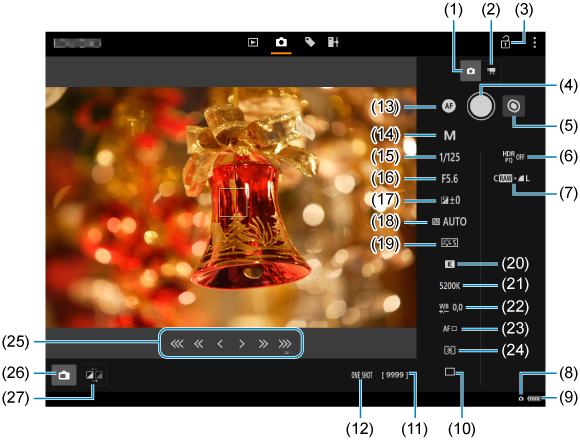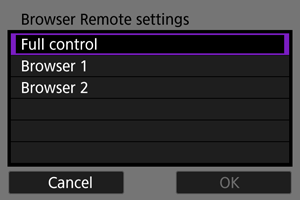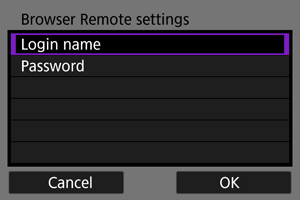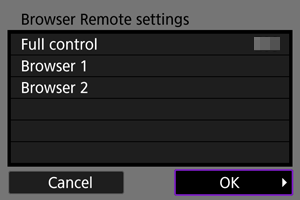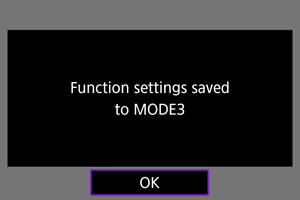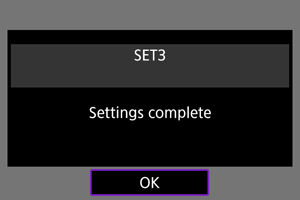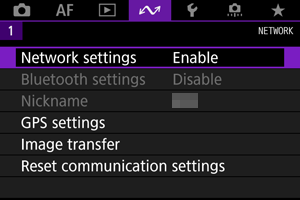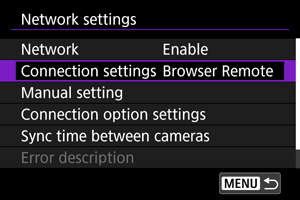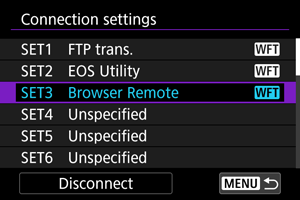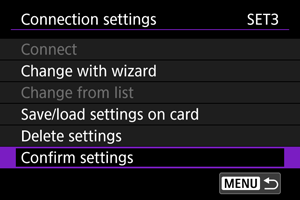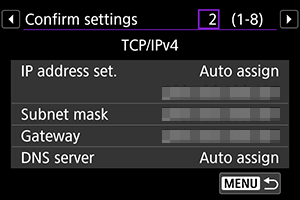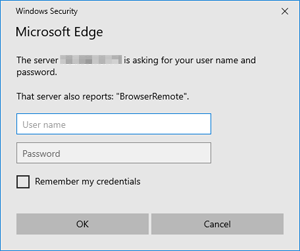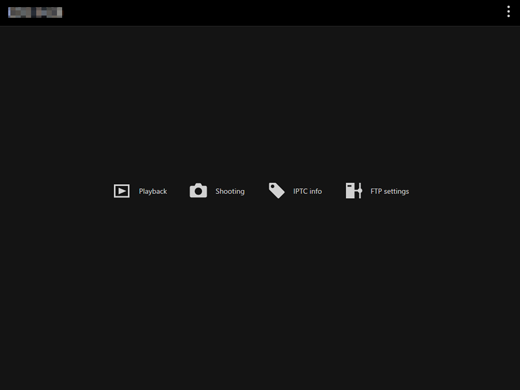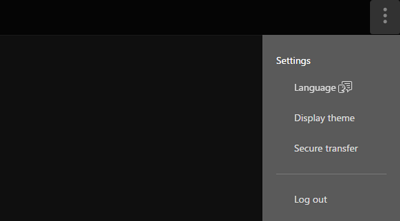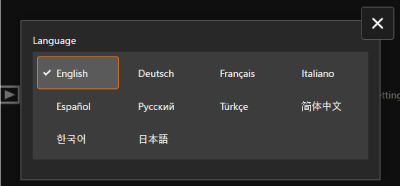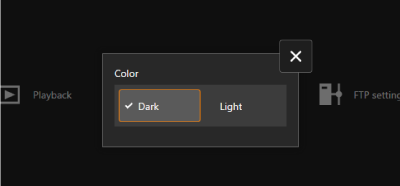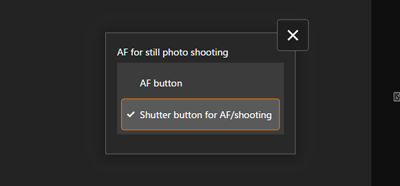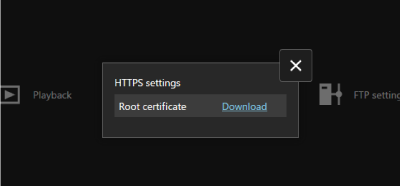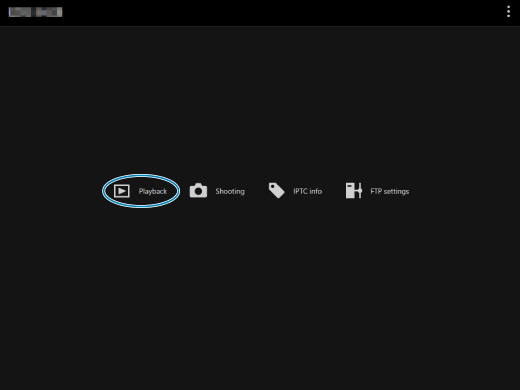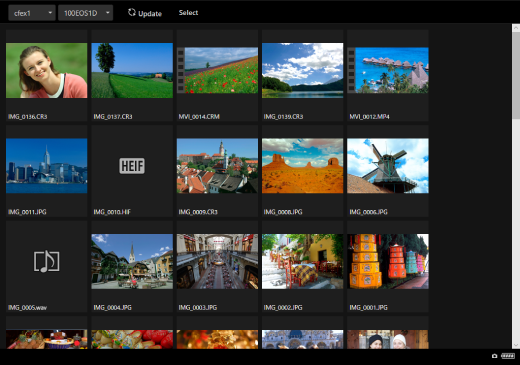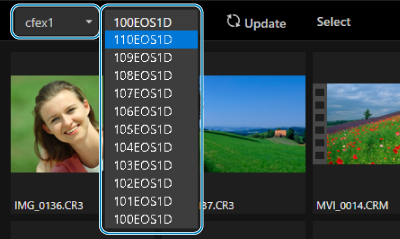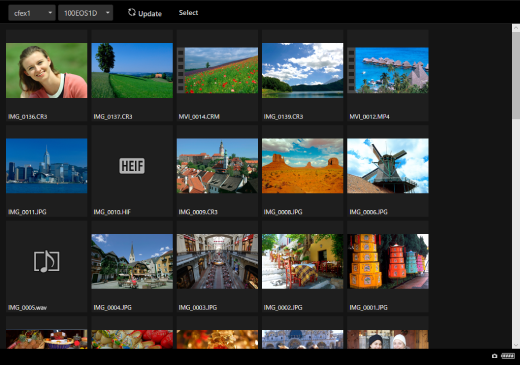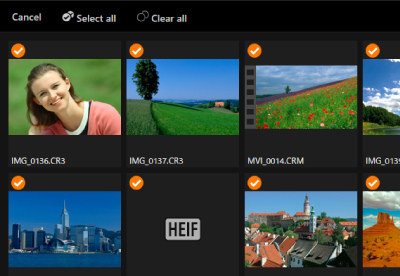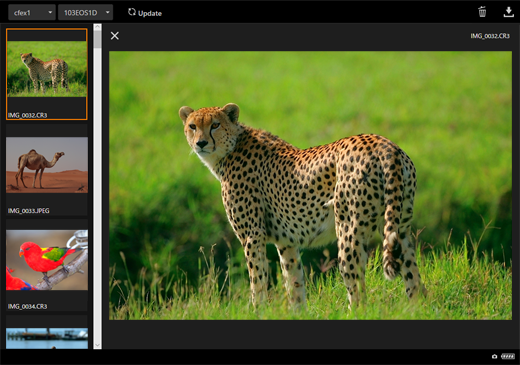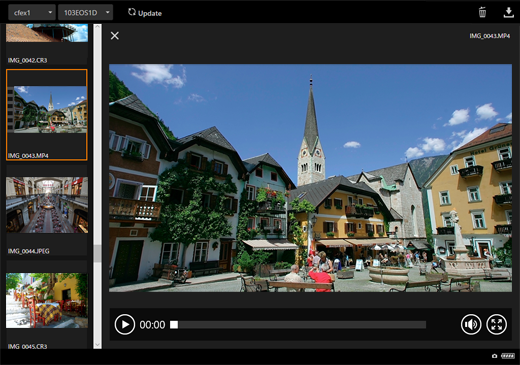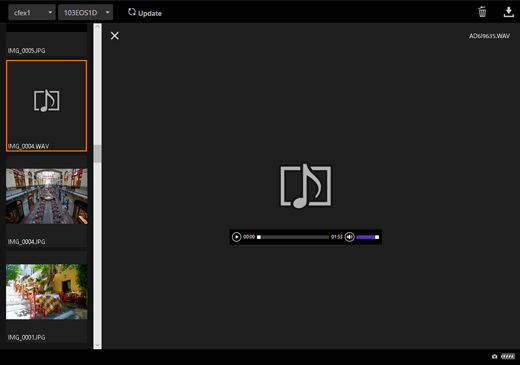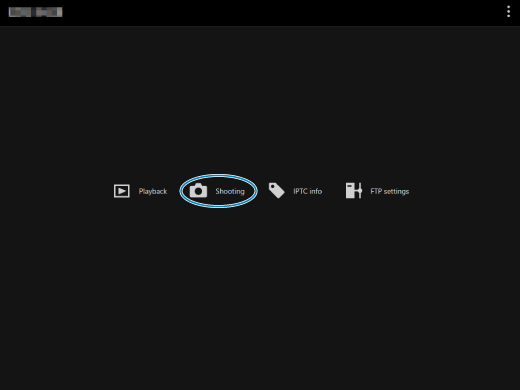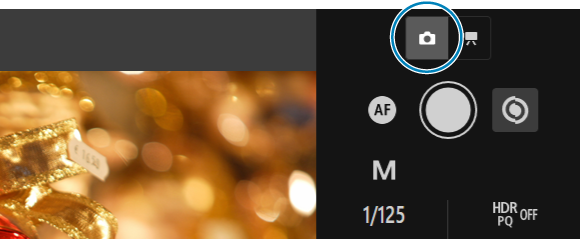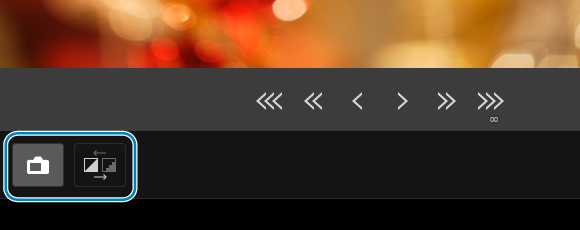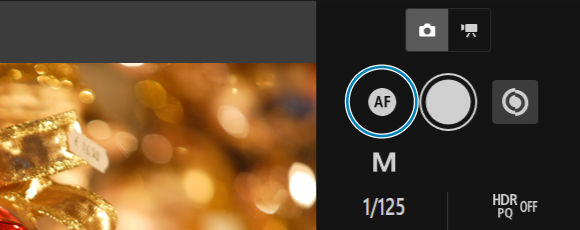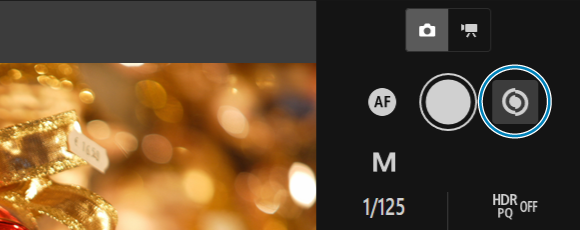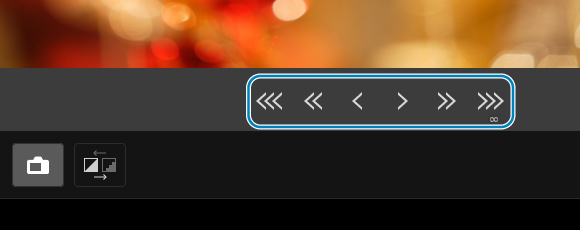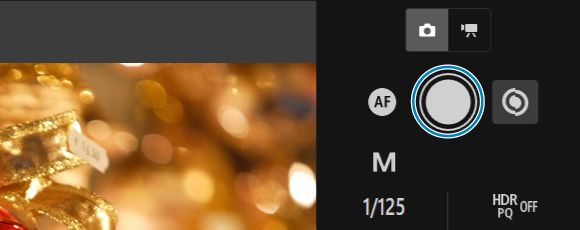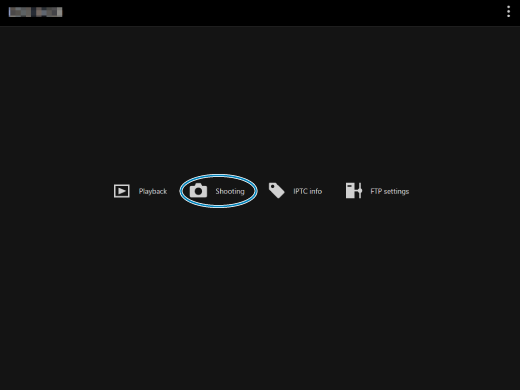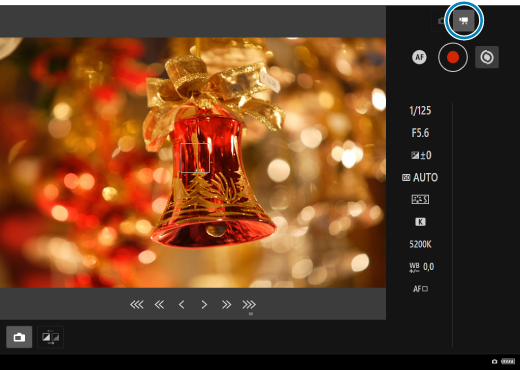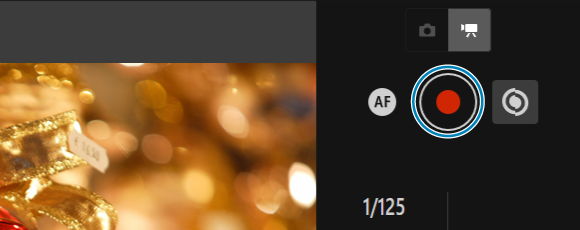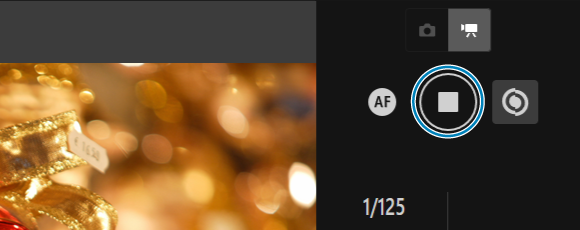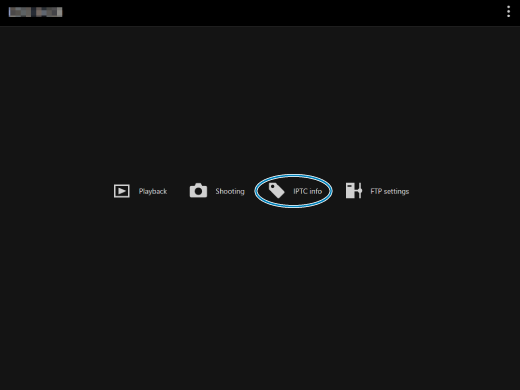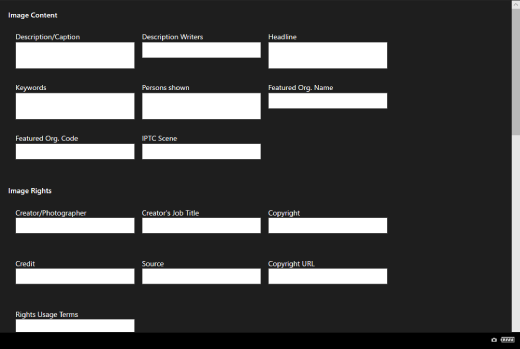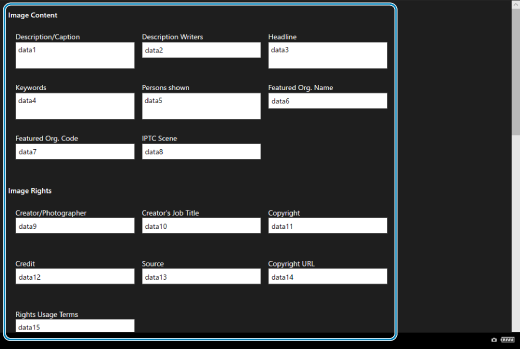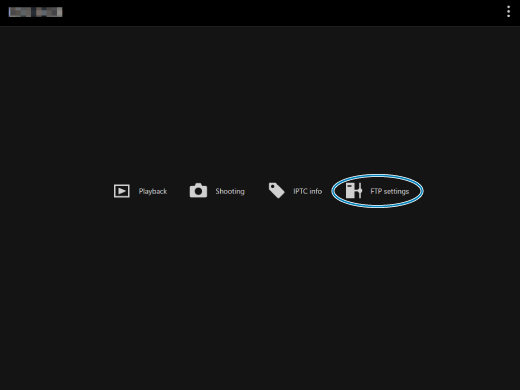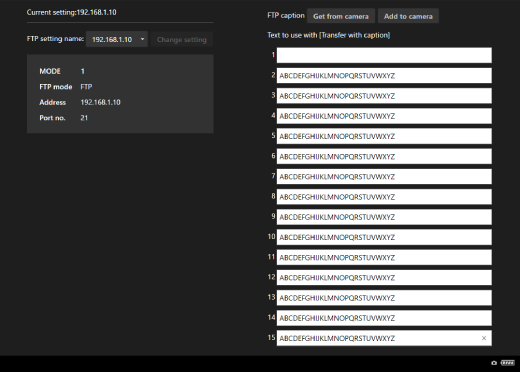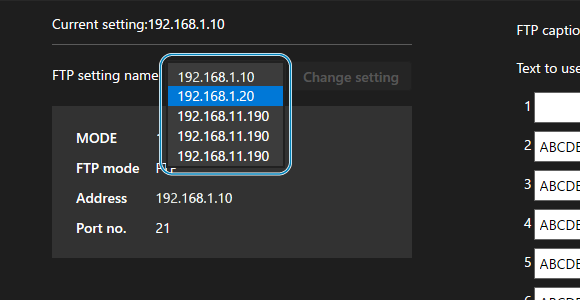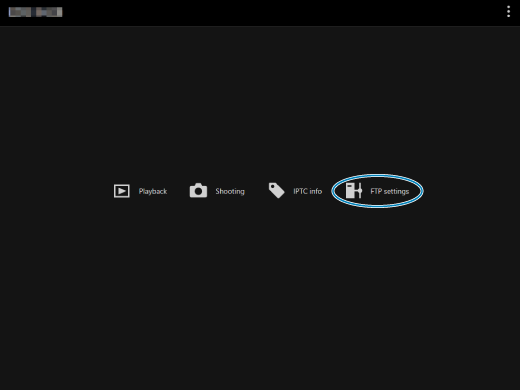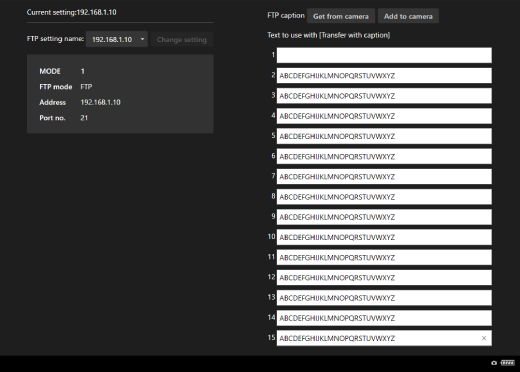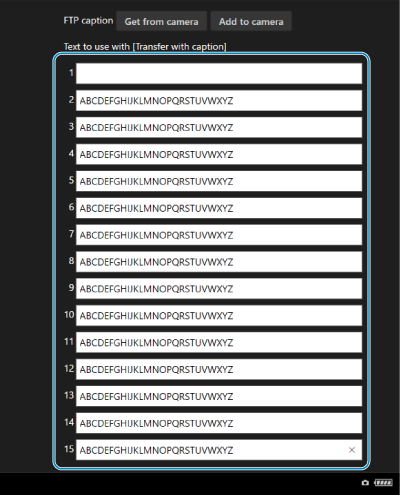|
|
EOS-1D X Mark III: Controlling the Camera with Browser Remote
| Article ID: ART176366 |
| |
Date published: 02/03/2020 |
| |
Date last updated: 09/15/2023 |
Description
Controlling the Camera with Browser Remote
Solution
|
Controlling the Camera with Browser Remote
Controlling the Camera with Browser Remote
Using a browser, you can browse and save camera images, shoot remotely, and perform other operations on a computer or smartphone.
Configuring Browser Remote Connection settings
These instructions are continued from Configuring Communication Function Settings.
Specify a login name and password for accessing the camera from a computer. The login name and password you specify here are used when connecting to the camera.
-
Select [Full control] or [Browser *].
- Browser Remote enables camera access by users at up to three computers at once.
- The [Full control] account can use all Browser Remote features. This account is only available on one computer.
- The [Browser *] account is limited to browsing images on the camera and saving them to the computer. This account is available on up to two computers.
-
Configure the [Login name] or [Password].
- Select [Login name] and [Password] to access the virtual keyboard () and enter the login name and password.
- Select [OK] to return to the screen in step 1. Follow steps 1–2 for each account to be used.
-
Select [OK].
-
Select [OK].
-
Select [OK].
- Display returns to the [Network settings] screen.
- Setting information is stored on the camera.
Connection settings for Browser Remote are now complete.
Note
- You can change WFT account settings on the [WFT account] screen (), accessed by selecting [Browser Remote settings] in [Connection option settings]. The port number setting can also be changed on the [Browser Remote settings] screen by selecting [Port no. (HTTP)] or [Port no. (HTTPS)]. Note that there is normally no need to change the port number (80 for HTTP, 443 for HTTPS).
Displaying Browser Remote
From a browser, log in to the Browser Remote page on the camera. Make sure the camera and computer are already connected via a wired LAN connection.
Checking the camera's IP address
The camera's IP address, as displayed in step 5, must be entered in the browser address bar to access the camera from a browser.
-
Select [ : Network settings]. : Network settings].
-
Select [Connection settings].
-
Select [SET* Browser Remote].
-
Select [Confirm settings].
- Setting details are displayed.
-
Check the settings.
- Turn the
 dial to access other pages. dial to access other pages.
- Write down the IP address.
- After checking, press the
 button to close the confirmation screen. button to close the confirmation screen.
Logging in to Browser Remote
-
Start a browser.
- Start a browser on the computer.
-
Enter the URL.
- In the address bar, enter the IP address you noted in step 5.
- Press the Enter key.
-
Enter the information for [Login name] and [Password].
-
Configure default settings as needed.
Caution
- Browser Remote is not available unless the browser support JavaScript.
- Some menu items are not available when connected to the camera.
Browsing Images
Enables you to browse images on cards in the camera.
-
Select [Playback].
-
Select a card and folder.
- Select a card in the pull-down list at left.
- Select a folder in the pull-down list at right.
-
Perform image operations as needed.
-
Selecting [Update] displays any images that have been added.
-
With [Select] selected, you can select multiple images.
Selecting individual thumbnails selects each image separately. Selecting thumbnails again clears the selection.
Selecting [Select all] marks all images on the browsing screen as selected.
Selecting [Clear all] clears selection of all images.
Selecting [Cancel] returns to the browsing screen.
-
Selecting a thumbnail switches to the playback screen and shows the image enlarged.
Still photo playback screen
Movie playback screen
Audio playback screen
-
Selecting an image and then [ ] erases the image. ] erases the image.
-
Selecting an image and then the [ ] button downloads the image to the computer. ] button downloads the image to the computer.
Note
- Computer performance and the browser used may prevent or delay image display or prevent image downloading.
Shooting Remotely
You can use Browser Remote to shoot remotely.
Shooting still photos
-
Select [Shooting].
- (1)Still photo shooting button
- (2)Movie shooting button
- (3)Multi-function lock icon
- (4)Shutter button
- (5)MF toggle button
- (6)HDR shooting
- (7)Image quality
- (8)Browser Remote connection
- (9)Battery level
- (10)Drive mode
- (11)Available shots
- (12)AF operation
- (13)AF button
- (14)Shooting mode
- (15)Shutter speed
- (16)Aperture value
- (17)Exposure compensation
- (18)ISO speed
- (19)Picture Style
- (20)White balance
- (21)Color temperature
- (22)White balance correction
- (23)AF method
- (24)Metering mode
- (25)MF button
- (26)Live View shooting button
- (27)Live View image quality toggle button
-
Select (1) Still photo shooting button.
-
Set the lens's focus mode switch to  . .
-
Display the Live View image.
- To activate or deactivate Live View, select (26) Live View shooting button.
- For more responsive Live View image display, select (27) Live View image quality toggle button, which will reduce Live View image quality to improve responsiveness. Select it again to restore the original image quality.
-
Set up shooting.
- Select setting items (such as image quality) to view the setting details, which you can configure.
- Configure the settings as needed.
-
Focus on the subject.
When using autofocus
- To start AF with [AF button] selected in the [AF for still photo shooting] menu, select the (13) AF button.
- To start AF with [Shutter button for AF/shooting] selected in the [AF for still photo shooting] menu, select and release (4) Shutter button.
When focusing manually
-
Take the picture.
- Select (4) Shutter button, and when you release the button, the camera shoots.
- Captured images are saved to the card in the camera.
- To browse and download images, see Browsing Images.
Caution
- Depending on the communication status, image display or shutter release timing may be delayed.
- Still photo shooting is not possible with the camera's Live View shooting/movie shooting switch set to
 . .
Recording movies
-
Select [Shooting].
-
Select (2) Movie shooting button.
-
Configure settings as needed.
-
Record the movie.
Movie recording standby
Movie recording in progress
- Select (4) Shutter button, and when you release the button, movie recording begins.
- During movie recording, the red [○] on (4) Shutter button changes to a white [□].
- To stop movie recording, select (4) Shutter button again and release the button.
Registering IPTC Information
Enables you to edit and register IPTC* information (comments on images, such as captions, credits, and shooting locations) on the camera. Images can be tagged with IPTC information registered on the camera.
International Press Telecommunications Council
-
Select [IPTC info].
-
Select [Load from file].
- Selecting [Load from file] enables you to load IPTC information (in XMP format) that was saved using EOS Utility.
-
Edit and register information as needed.
-
Selecting [Add to camera] to applies the edited IPTC information to the camera.
This also sets the camera's Custom Function [ 8: Add IPTC information] option to [ 8: Add IPTC information] option to [ ]. ].
-
Selecting [Clear camera info] deletes all IPTC information registered on the camera.
This also sets the camera's Custom Function [ 8: Add IPTC information] option to [ 8: Add IPTC information] option to [ ]. ].
-
Selecting [Clear] clears all IPTC information.
Configuring FTP Server Settings
If you will use FTP transfer for images captured remotely, you can use the camera's connection settings () to change the target FTP server.
-
Select [FTP settings].
-
Select registered connection settings of the FTP server to use.
-
Select [Change setting].
Creating and Registering Captions
You can create captions and register them on the camera to use them as described in Adding a Caption Before Transfer.
-
Select [FTP settings].
-
Enter the caption or captions.
- Enter up to 31 characters (in ASCII format).
- To acquire caption data stored on the camera, select [Get from camera].
-
Set the captions on the camera.
- Select [Add to camera] to set your new captions on the camera.
|
|
